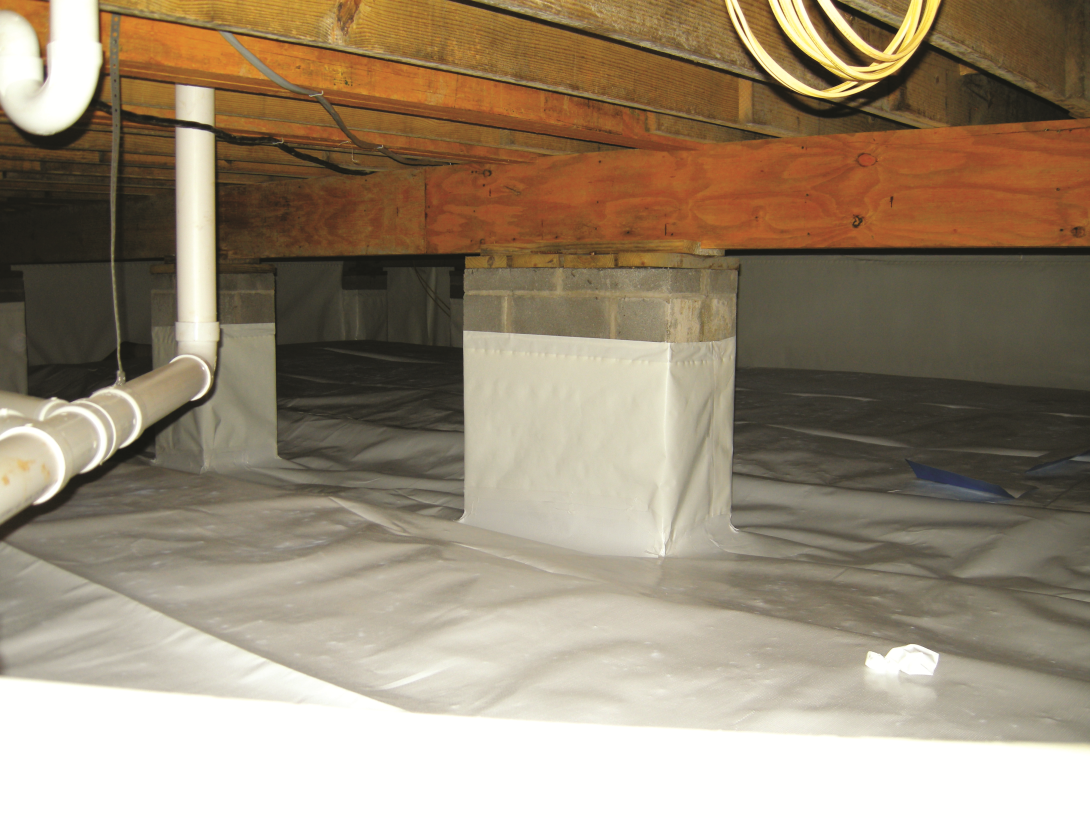
Concrete
Crawlspace: Capillary Break at Crawlspace Floors
Moisture can enter a crawlspace by migrating into the soil beneath the crawlspace and then entering the crawlspace as liquid water or water vapor from the soil, which can then condense on floor joists.
Without an effective barrier, water can penetrate the porous concrete foundation slab. Moisture in crawlspaces can promote mold and rot along floor joists and rim joists. Foundation floor water barriers, as part of a comprehensive set of measures that minimize a home’s risk of water damage, help drain water away from under the slab.
To prevent water or water vapor from entering the crawlspace, cover the crawlspace floor with a heavy polyethylene plastic capillary break that is sealed tightly to the walls and piers to provide a continuous vapor barrier. It doesn’t matter whether the crawlspace is vented or unvented; this ground cover should still be installed. The ground cover will also help keep soil gases from entering the home. Remember to:
- Apply ≥ 6-mil polyethylene sheeting.
- Lap any seams in the sheeting by 6 to 12 inches and seal the seams with a continuous bead of acoustical sealant, butyl rubber, or butyl acrylic caulk, or seal the seams with tape or patch polyethylene.
- Seal the sheeting around all pipes coming up from the ground.
- Lap sheeting up walls and piers to at least 6 inches and attach to the walls or piers with mechanical fasteners, or secure sheeting to the ground by staking at crawlspace perimeters.
To prevent bulk water intrusion in vented crawlspaces, ensure proper grading of the site, sufficient perimeter drainage, proper irrigation practices, etc.